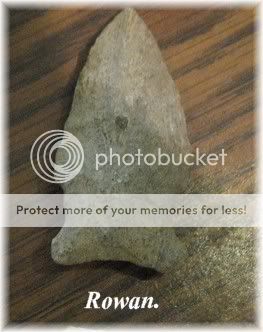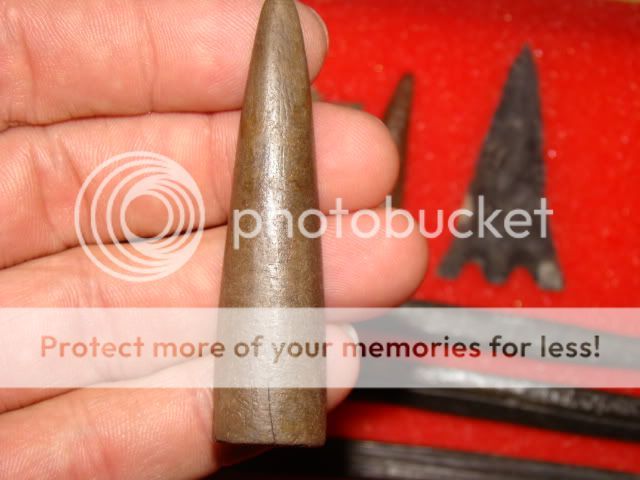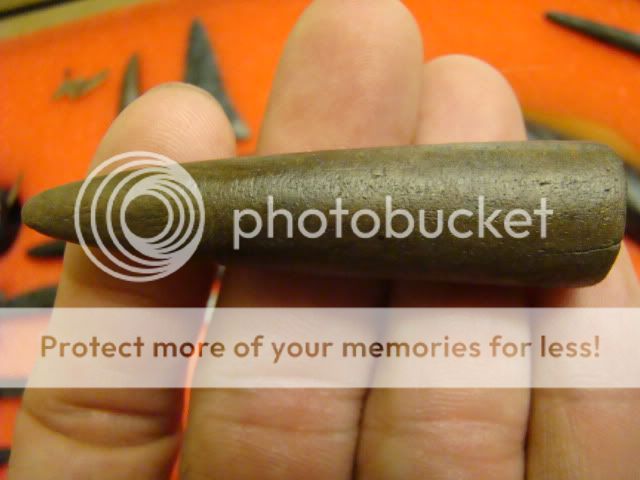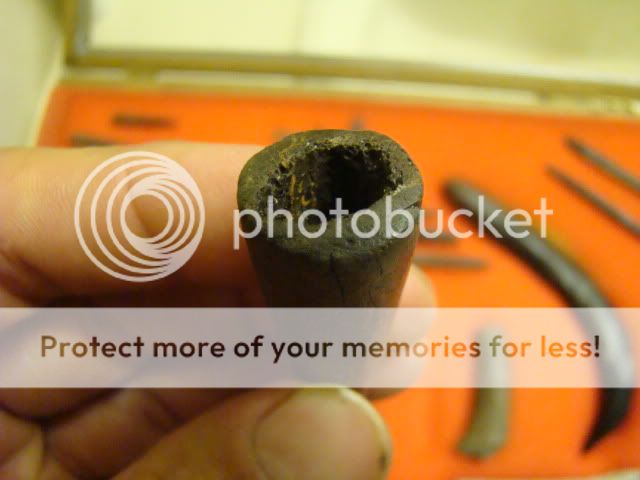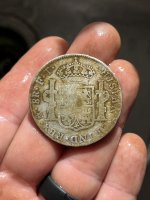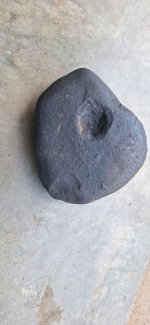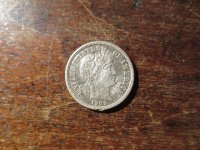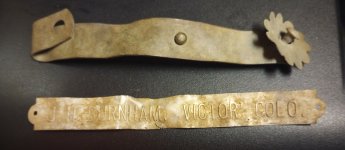- Jan 27, 2009
- 18,717
- 11,709
- 🥇 Banner finds
- 1
- Detector(s) used
-
Tesoro Conquistador freq shift
Fisher F75
Garrett AT-Pro
Garet carrot
Neodymium magnets
5' Probe
- Primary Interest:
- All Treasure Hunting
Name an arrowhead or tool. Give a time frame. Post a picture and tell us what you can of its many uses. Provide your research links...... Here is an interesting one to start......
Morrow Mountain,Middle Archaic, Hunting and warfare.
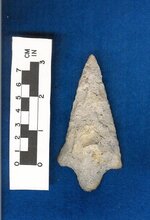
Source Book, Prehistoric Indians of the South East. Archeology of Alabama and the Middle South.pg 64 online .
Burials
The burial positions of these individulalls was not the only unusuall thing about them_ all three had met violent deaths. The rib cage of burial 83 an adult male,had been penetrated by three projectile points. One of these was a morrow mountain while the other two had been fragmented upon impact and could not be identified. Burial 84,also an adult male was associated with 7 Morrow Mountain projectiles points. 4 Morrow Mountains were found in the thoracic cavity, 2 Morrow Mountains were firmly imbedded in the spinal column and one Morrow Mountain was found in the mouth cavity. One of the two points found in the spinal column"had entered from the front and loged in the centrum(center part of the vertebra, the other had penetrated from the rear and was embedded between two neural processes.
Burial number 85, a male adolecent had been placed into the burial pit first then a cache of artifacts was placed between the arm and body.Two bone awls from deer ulnas,one biface knife,and two Morrow Mountain projectile points. This individuall also had a projectile point firmly embedded in his spinal column.
Here is the book on line if you want to buy it. Talks a lot about pre-clovis artifacts,, You can read some on line at
http://books.google.com/books?id=kM...esult&ct=result&resnum=4#v=onepage&q=&f=false
Morrow Mountain,Middle Archaic, Hunting and warfare.

Source Book, Prehistoric Indians of the South East. Archeology of Alabama and the Middle South.pg 64 online .
Burials
The burial positions of these individulalls was not the only unusuall thing about them_ all three had met violent deaths. The rib cage of burial 83 an adult male,had been penetrated by three projectile points. One of these was a morrow mountain while the other two had been fragmented upon impact and could not be identified. Burial 84,also an adult male was associated with 7 Morrow Mountain projectiles points. 4 Morrow Mountains were found in the thoracic cavity, 2 Morrow Mountains were firmly imbedded in the spinal column and one Morrow Mountain was found in the mouth cavity. One of the two points found in the spinal column"had entered from the front and loged in the centrum(center part of the vertebra, the other had penetrated from the rear and was embedded between two neural processes.
Burial number 85, a male adolecent had been placed into the burial pit first then a cache of artifacts was placed between the arm and body.Two bone awls from deer ulnas,one biface knife,and two Morrow Mountain projectile points. This individuall also had a projectile point firmly embedded in his spinal column.
Here is the book on line if you want to buy it. Talks a lot about pre-clovis artifacts,, You can read some on line at
http://books.google.com/books?id=kM...esult&ct=result&resnum=4#v=onepage&q=&f=false
Upvote
0




 ?? i aint in no hurry to belive anything these brains claim to..l;ater man. crow. ps. we gotta real flamer going on here man! good thread.
?? i aint in no hurry to belive anything these brains claim to..l;ater man. crow. ps. we gotta real flamer going on here man! good thread. crow.
crow.
